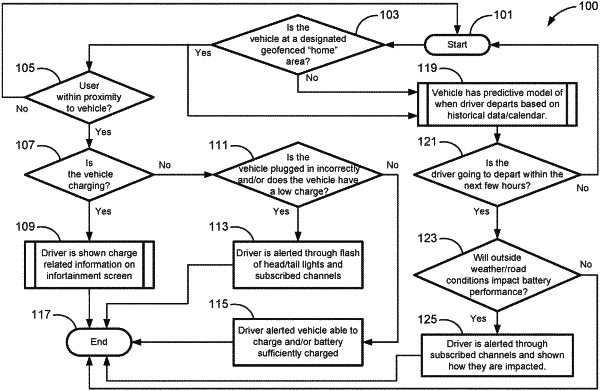| CPC B60L 53/66 (2019.02) [B60L 58/12 (2019.02); B60Q 1/50 (2013.01); B60Q 5/005 (2013.01); H04W 4/022 (2013.01); B60L 2240/622 (2013.01)] | 20 Claims |

|
1. A method of operating a vehicle with a vehicle battery, the method comprising:
receiving, via a vehicle controller from a location detection device, vehicle location data indicative of a real-time vehicle location of the vehicle;
determining, via the vehicle controller, if the real-time vehicle location is within a virtual geofence delineating a predefined geographic area;
receiving, via the vehicle controller from a location sensing device in response to the real-time vehicle location being within the virtual geofence, user location data indicative of a real-time user location of an authenticated user of the vehicle;
determining, via the vehicle controller, if the real-time user location is within a predefined proximity to the real-time vehicle location;
determining, via the vehicle controller in response to the real-time user location being within the predefined proximity to the real-time vehicle location, whether the vehicle battery is charging correctly or incorrectly;
transmitting, via the vehicle controller responsive to the vehicle battery charging incorrectly, a notification to the authenticated user including a warning the vehicle battery is not charging correctly and a prompt to take a corrective action;
determining, via the vehicle controller using a predictive model, a battery impact decision including predicting if the authenticated user will depart in the vehicle within a predetermined window of time and identifying driving conditions at a predicted departure time of the user determined to measurably impact battery performance of the vehicle battery; and
transmitting, via the vehicle controller to a resident vehicle subsystem of the vehicle responsive to the vehicle battery charging correctly and based on the battery impact decision, a command signal to execute a control operation related to the charging of the vehicle battery.
|